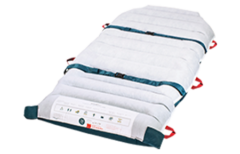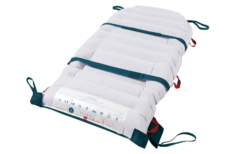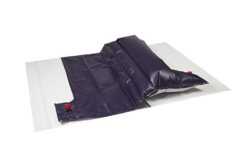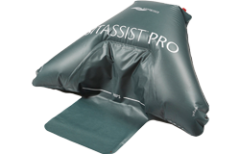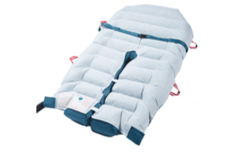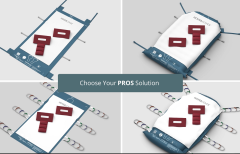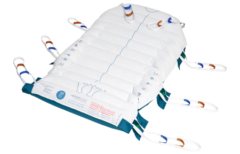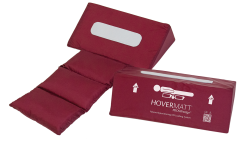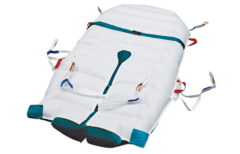Pressure Injury Prevention
Promote Safe Patient Handling
Pressure injuries are a prevalent and devastating reality for the patient population, affecting as many as 2.5 million patients every year1. The implications of pressure injuries are significant for patients and include a decreased quality of life2, extended hospital stay (averaging an increase of 7-10 days3) and an increased rate of mortality4. For healthcare facilities, care costs relating to pressure injuries are high, ranging from $20,900-$151,7005. Hospital acquired pressure injuries (HAPI) are no longer covered by Medicare, leaving hospitals financially responsible.
Microclimate
When considering the ideal conditions for pressure injury prevention, the local temperature and moisture – also known as the relative humidity or microclimate – at the interface of body and support surface are often linked. Managing the microclimate, pressure, friction and shear at the patient interface is critical for skin safety. HoverTech’s air-assisted safe patient handling products help support pressure injury prevention initiatives, while making it easier and safer for caregivers to move patients. Our independent laboratory testing shows that these highly breathable products with elevated evaporative properties help to maintain the ideal microclimate, are compatible with low air loss surfaces, reduce friction and shear during transfers and positioning, and redistribute pressure – all while protecting staff safety and improving efficiency.
Single-Patient Use Air Transfer Mattress
Both the HoverMatt® Single-Patient Use (SPU) Air Transfer Mattress and HoverSling® Repositioning Sheet feature industry-leading fabric that has been tested according to the latest standards approved by NPIAP’s (formerly NPUAP) S3I Committee. This means you can be confident leaving the HoverMatt SPU and HoverSling under your patients for all-day care, including lateral transfers, boosting, turning and positioning. The air technology used to reduce the physical effort for caregivers also benefits patients, who glide over surfaces on a cushion of air that eliminates friction and significantly reduces shear.
Technical Studies Supporting Pressure Injury Prevention

Sources:
- Healthcare (Basel). 2015 Sep; 3(3): 574–585. Published online 2015 Jul 17. doi: 10.3390/healthcare3030574
- Reddy, M.; Gill, S.S.; Rochon, P.A. Preventing pressure ulcers: A systematic review. JAMA 2006, 296, 974–984. [Google Scholar] [CrossRef] [PubMed]
- Kuhn, B.A.; Coulter, S.J. Balancing the pressure ulcer cost and quality equation. Nurs. Econ. 1992, 10, 353–359. [Google Scholar] [PubMed]
- Berlowitz, D.; Lukas, C.V.; Niederhauser, A.; Silver, J.; Logan, C.; Ayello, E. Preventing pressure ulcers in hospitals: A toolkit for improving quality of care. Available online:
http://www.ahrq.gov/professionals/systems/hospital/pressureulcertoolkit/putoolkit.pdf - Are we ready for this change?. Content last reviewed October 2014. Agency for Healthcare Research and Quality, Rockville, MD.
https://www.ahrq.gov/patient-safety/settings/hospital/resource/pressureulcer/tool/pu1.html
To discuss a solution for your facility, please contact us at info@hovermatt.com
